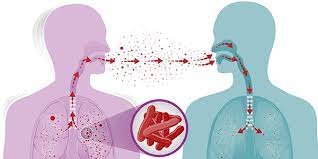Traditional Knowledge (TK) is the awareness, experience, expertise, knowledge and applications that are established, continued, performed and passed on from generation to generation within a region or community, often forming a part of its cultural, social or spiritual identity. TK can be attributed to in a wide variety of contexts, viz. agricultural, scientific, technical, ecological and medicinal knowledge as well as biodiversity-related knowledge. Till date, TK in India is mostly undocumented and typically inherited via word of mouth (Rai, 2018).
When it comes to the patentability of Traditional Knowledge, the Indian patent laws do not permit the protection of TK under section 3 (p) of the Indian Patent Act, 1970. An invention which in effect, is traditional knowledge or which is an aggregation or duplication of known properties of a traditionally known component or components is not an invention and cannot be patented. The key issue in protecting TK is prior knowledge of the innovation as much of TK is already in the public domain being passed on orally or through documentation through generations. This makes most TK ineligible for IP protection as the majority of information is already part of “prior art” and therefore there is very little in terms of novelty that can be established for patent protection (Rai, 2018).
1. Traditional Knowledge in India:
There has been a lot of debate to protect traditional knowledge under the IP regime but that in itself faces a lot of challenges such as; a) under which IP under which traditional knowledge can be protected, b) since every IP protection is provided for a limited period of time then how will traditional knowledge have continuous protection. Protection of traditional knowledge is rooted in the problem of Bio-piracy. Bio-piracy occurs when there is commercial utilisation of traditional knowledge without proper authorisation of the indigenous or local people associated with such knowledge (Singh, 2018).
The Traditional Knowledge Digital Library is a collaborative project of the Government of India through the Council of Scientific and Industrial Research (CSIR) and the Ministry of AYUSH, to collect information on traditional knowledge existing in India, in various languages and format as a single repository. TKDL serves as a reference of prior arts for patent examiners at International Patent Offices (IPOs). Traditional Knowledge Resource Classification (TKRC) is an innovative classification system of TKDL. TKRC has structured and classified the Indian Traditional Medicine System in approximately 25,000 subgroups for Ayurveda, Unani, Siddha and Yoga. TKRC has enabled the incorporation of about 200 sub-groups under A61K 36/00 as defined in the International Patent Classification instead of a few sub-groups earlier available on medicinal plants under A61K 35/00; thus, enhancing the quality of search and examination of the prior art with respect to patent applications in the area of traditional knowledge.
In 2011, an International Conference was organized by the World Intellectual Property Organization (WIPO) in collaboration with CSIR on ‘Utilization of Traditional Knowledge Digital Library as a Model for Protection of Traditional Knowledge’, at New Delhi. Pursuant to this, WIPO in collaboration with CSIR and DIPP (Ministry of Commerce and Industry), organised an ‘International Study Visit to TKDL’ for 19 countries interested in replication of TKDL (Source: Mondaq, 2021). So far, India has signed TKDL Access Agreements with the EPO and the patent offices of Australia, Canada, Germany, the United Kingdom and the United States. Negotiations are also ongoing with the patent offices of New Zealand and Japan where agreement in principle has already been reached (World Intellectual Property Organisation, WIPO, 2011).
2. Traditional Knowledge in North East India:
North East India is known for its valuable heritage of herbal medicinal knowledge India’s ethnic communities and tribes who live in the remote hills and forest areas to a large extent still depend on the indigenous systems of medicine. This ethnic and tribal segment of India’s population constitutes around 430 communities, of which around 130 major tribal groups (a population of about 8 million people, which is approximately 12 per cent of the total population of India, Census 2001) are settled in hills and plains of North East India, a location within the sub-Himalayan ranges, Indo-Burma, hills of Nagaland, Manipur, Mizoram and Meghalaya plateau and the plains, foothills, N C Hills and Karbi Anglong districts of Assam.
Being at the confluence of three major biogeographical realms of the world, the region is extremely rich in floral and faunal biodiversity with several endemic species and represents one of the few hot spots of biodiversity of the world. This region constitutes the states of Arunachal Pradesh, Assam, Manipur, Meghalaya, Mizoram, Nagaland, Tripura and Sikkim and a few of the ‘indigenous people’ in North-East would include Assamese, Bengali, Bishnupriya Manipuri, Chakma, Bodo, Dimasa, Garo, Karbi, Khasi, Kuki, Meitei, Mizo, Naga, Rabha, Koch Rajbongshi, Mising, Sylheti, Tiwa, Tripuri, Nepali, Hmar, Zeme Naga, Purvottar Maithili, Adivasi, etc.
The use of folk medicines and indigenous folk culture and dresses (for example Muga silk) and indigenous cultivation (for example Jhum cultivation) is still vital in this region. Their understanding and dependence on nature have been reflected in their traditional culture, local beliefs, folklores and valuable knowledge of ethno-botanical importance. Some of the medicinal uses of these tribal communities are now incorporated in the organised system of medicine, yet most of the folk medicines have remained endemic to certain tribal pockets in North-East India since the knowledge of these medicines acquired through experience is generally passed on by oral traditions as a guarded secret of certain families (Source: Traditional Knowledge in North-East India…, Deka, 2014).
3. Traditional knowledge in Meghalaya:
Having had a fall recently and for someone who is undergoing treatment from a very experienced lady in her 80s, it made me ask her endless number of questions. . . Every time I meet her for consultation, she would narrate her experiences as to how she started, to where she is now – a known traditional healer of the State of Meghalaya. Like most cases, there is no one to take over this skill (the gift/talent) from her, in terms of family members or someone who is trained directly under her. Fortunately, she is associated with prominent organisations and Government agencies that have recognised her officially as a traditional practitioner and have also certified her for the same. She recently came back from Manipur to train some of the traditional healers there and for her that was a big achievement – something she could give back to the community.
Meghalaya too has come forward in taking a lot of initiatives by adopting sustainable measures to conserve such knowledge and practices, most importantly to document and general more manpower in the field. The State is rich in traditional knowledge and best practices practised by indigenous tribes in which many of them are of old age traditions. Many of these knowledge and practices were closely related to their livelihood. With modern technology especially in agriculture, such practices have gradually depleted the community.
Documentation of such traditional knowledge has attracted increasing attention in recent years from governments and cultural institutions as well as from indigenous peoples and local communities. In order to facilitate such knowledge and practices, the Centre strongly play a part in preserving those treasures by documenting such practices from time to time and maintaining them in the form of pamphlets or in near future as an organised data set, such as paper files, digital databases and traditional knowledge digital library (Source: Bio Resources Development Centre (BRDC), Meghalaya website).
Some of the traditional best practices documented by BRDC include Scented Rice of GabilDaningka, Smoked fish, Soap nut, Sticky rice from Jaintia Hills, Tomato cultivation at Laitkynsew, Traditional fermentation of Tung-rymbai and others. Apart from what was mentioned, the Centre had also documented the air layering method of Khasi Mandarin (Orange) Propagation, Nongkwai, Pynursla Block, Air layering method of Litchi Propagation, Umsyiem, Pynursla Block, traditional propagation of Banana, Rasong, Mawkynrew Block, and the traditional propagation of Tree Tomato, Jongksha, Mawkynrew Block, all in East Khasi Hills District. This has been cited as one of the examples of the work done in the State over the years. Various projects carried out and different authors have reported thousands of ethno-medicinal uses in this region.
This note is a reflection of the realisation by policymakers that documentation at all levels has become imperative across States and regions of the country. The need to protect traditional knowledge has increased with changing times, especially in order to stop unauthorised and commercial misuse of such knowledge. It is important to protect the indigenous people from such loss and also help them to preserve such ancient practices. Protection to TK shall also promote its wider and efficient use of the existing knowledge and resources. (The writer can be reached at maxwell.lyngdoh@gmail.com)


























